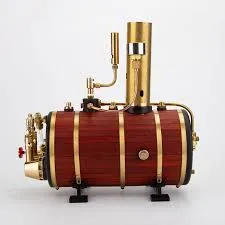
Aug . 07, 2024 23:05 Back to list
Optimum Temperature Settings for Standard Hot Water Boilers in Residential Heating Systems
Understanding Normal Hot Water Boiler Temperature
Hot water boilers play a quintessential role in maintaining comfort in residential and commercial spaces, especially during colder months. These systems are designed to heat water efficiently and distribute it for heating purposes, including radiators and underfloor heating. However, to ensure functionality, energy efficiency, and safety, it is crucial to understand the normal operating temperature of hot water boilers.
What is the Normal Temperature Range?
The normal operating temperature for hot water boilers generally lies between 140°F and 180°F (60°C to 82°C). This range is optimal for heating water without incurring excess energy costs or risking damage to the system and its components. It is critical to maintain temperatures within this range to ensure effective heat transfer while preventing overheating.
Operating at or below 140°F is generally safe for most residential water heating applications. However, temperatures above 160°F can enhance the efficiency of heating systems, reducing the amount of time the boiler needs to run. Homeowners and facility managers should be cautious, though, as temperatures exceeding 180°F may lead to scaling within the boiler or increase the risk of scalding.
Factors Influencing Boiler Temperature
Several factors can influence the hot water boiler's operating temperature
1. System Type Different types of boilers operate at varying temperatures. For instance, traditional cast iron boilers may run cooler, while high-efficiency condensing boilers often operate at lower temperatures to maximize efficiency.
normal hot water boiler temperature

2. Usage Requirements The temperature may need to be adjusted depending on the intended use of the hot water. For example, systems designed for radiant floor heating often operate at lower temperatures compared to those serving tap water or spa applications.
3. Seasonal Changes As external temperatures fluctuate, the boiler's settings may need adjustment to ensure consistent indoor comfort. During colder months, a higher temperature setting may be necessary to keep spaces warm.
4. Temperature Controls and Thermostats Modern boilers come equipped with advanced temperature controls and programmable thermostats that help maintain the desired temperature automatically, optimizing energy consumption.
Safety Considerations
While maintaining normal operating temperatures, safety should always be a priority. Boiler systems that run at excessively high temperatures can be hazardous. They pose risks such as pressure buildup and can lead to equipment failure or even accidents. Regular maintenance, including flushing the system and checking pressure valves, is crucial to avoid these dangers.
Additionally, setting your water heater to 120°F (49°C) can prevent potential burns, especially in homes with children or elderly residents. Many experts recommend this temperature for safe yet adequate water heating. It's essential always to balance comfort and safety.
Conclusion
Understanding the normal hot water boiler temperature is vital for homeowners and facility managers alike. By keeping the system operating between 140°F and 180°F, one can optimize efficiency, prolong the life of the boiler, and ensure safety within the home. Regular maintenance and periodic temperature adjustments depending on seasonal needs will aid in navigating the complexities of heating systems, ensuring a warm and safe environment for all.
-
High-Efficiency Commercial Oil Fired Steam Boiler for Industry
NewsJul.30,2025
-
High-Efficiency Biomass Fired Thermal Oil Boiler Solutions
NewsJul.30,2025
-
High Efficiency Gas Fired Thermal Oil Boiler for Industrial Heating
NewsJul.29,2025
-
High-Efficiency Gas Fired Hot Water Boiler for Sale – Reliable & Affordable
NewsJul.29,2025
-
High Efficiency Biomass Fired Hot Water Boiler for Industrial and Commercial Use
NewsJul.29,2025
-
High-Efficiency Biomass Fired Hot Water Boiler for Industrial Use
NewsJul.28,2025
Related PRODUCTS






















